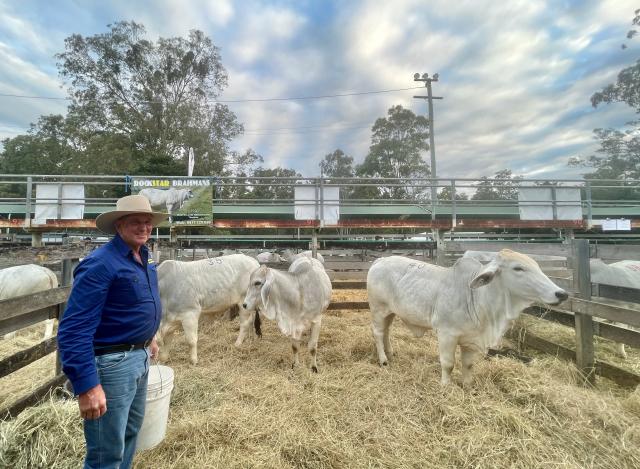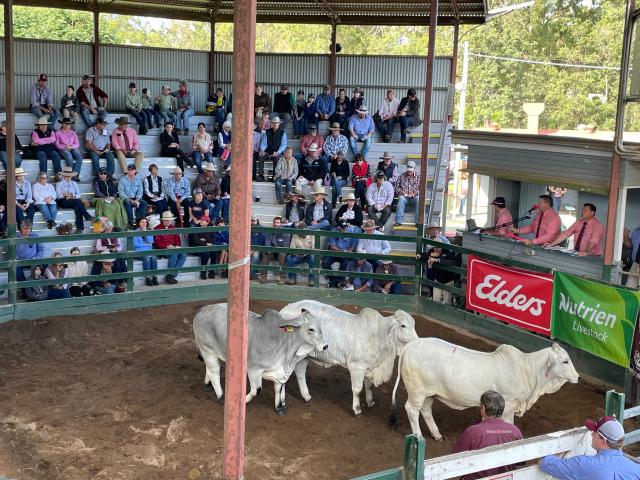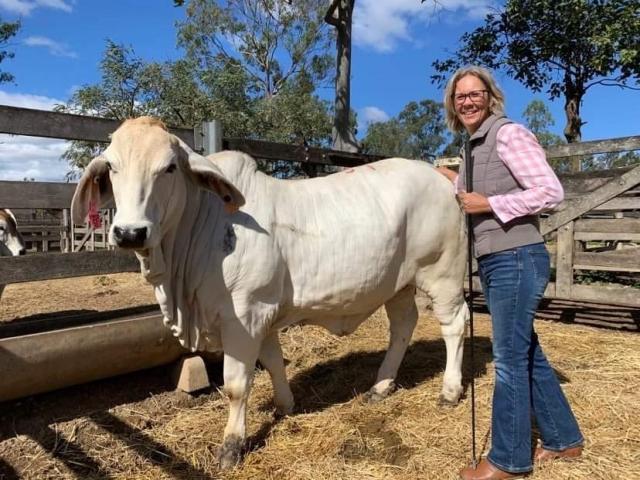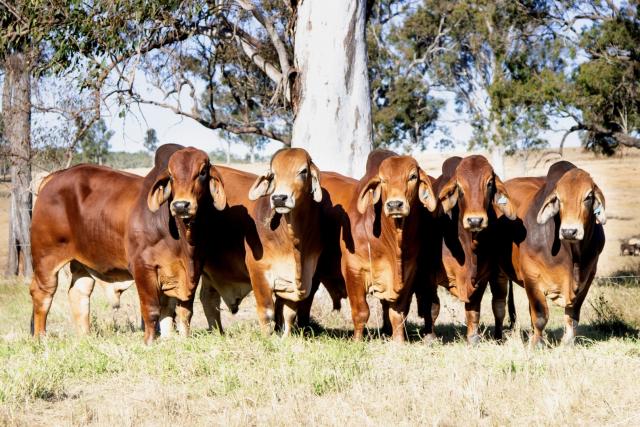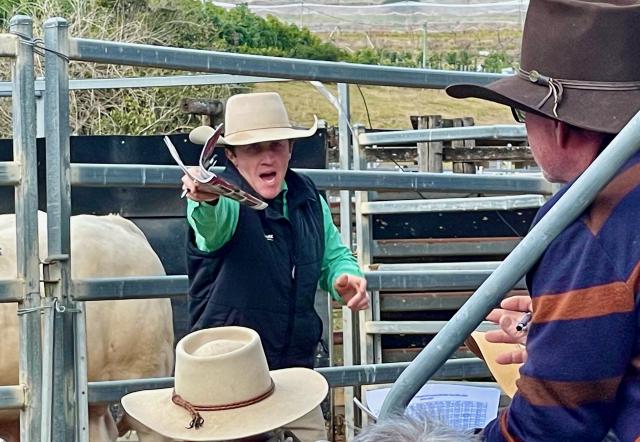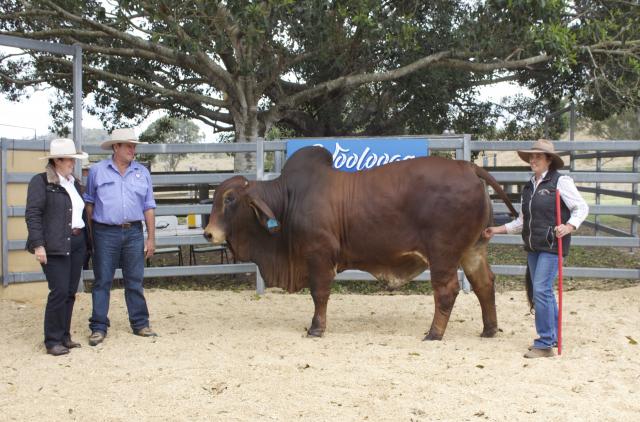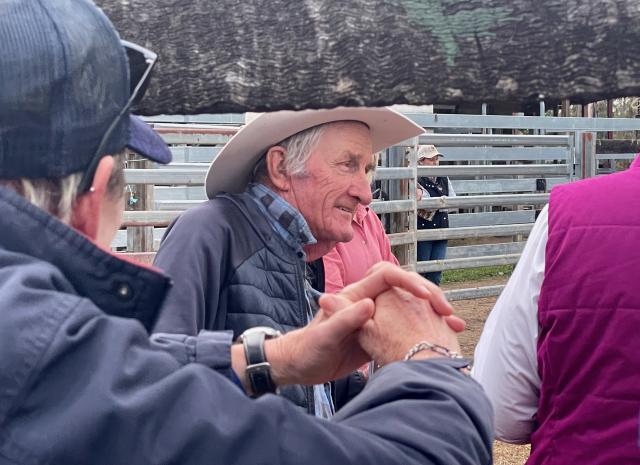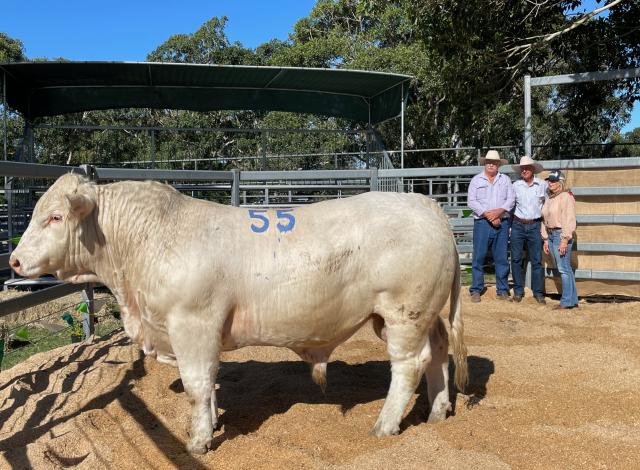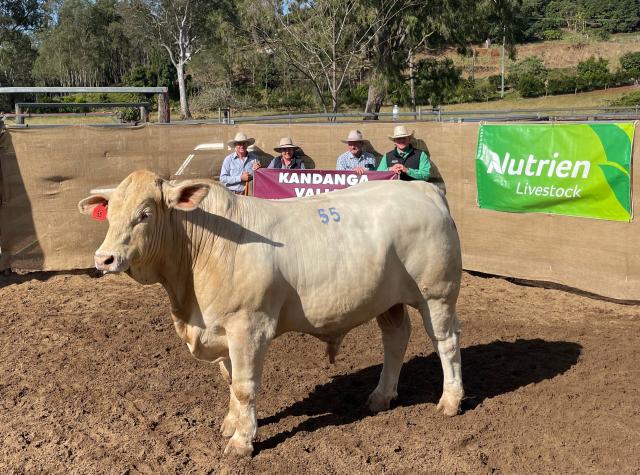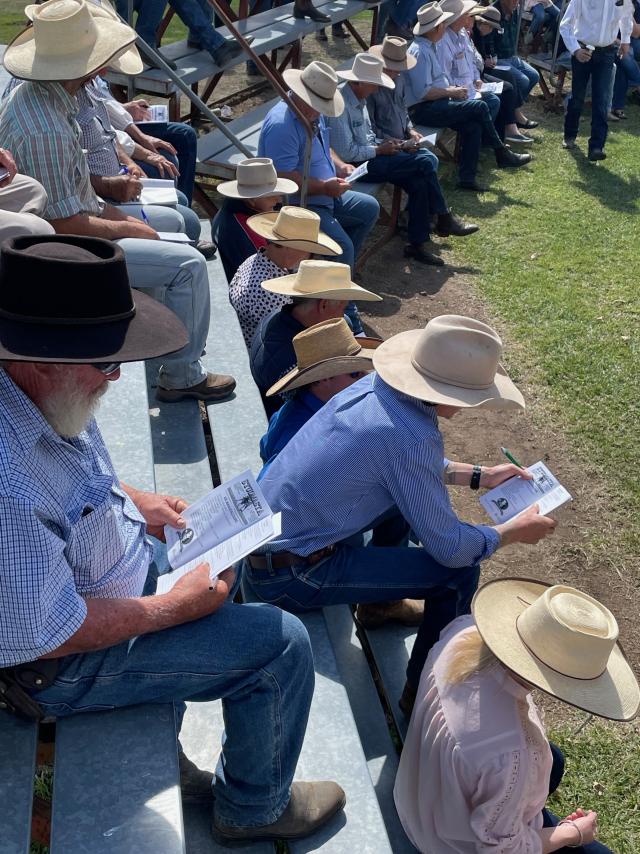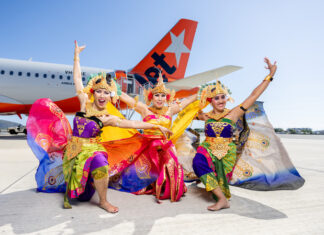
In a year of flooding, exotic disease concerns, and supply chain pressure, those on the land have seen a brighter end to the year thanks to strong market prices. ERLE LEVEY looks back on a year that brought change and challenges.
What can we make of 2022? It offered so much promise – livestock prices were high, farms were achieving record sales, Covid-19 was on the way out and the country was opening up again … or so we thought.
Instead, the region was subjected to severe flooding, not once, not twice but three times. And we continued to experience unseasonal rain throughout the year.
It was a wet drought, according Gympie livestock agent Dan Sullivan.
Significant rainfall and flooding events included ex-tropical cyclone Seth from 7-9 January, South East Queensland flooding in February, and further flooding in May.
Covid came back to bite us, particularly in the southern states during winter and we are now seeing rises in numbers again in Queensland as a consequence.
Yet we are protected somewhat by the climate – open air, warmer temperatures and sunshine.
Writing for on-line livestock marketers AuctionsPlus, Tim McRae said it had been an extraordinary year with Australian east coast young cattle registering 876c/kg carcass weight on December 1.
“For the past year, the cattle market took a more volatile path to reach its current price,’’ he said, “whip-sawed by the influence of exotic disease concerns during the middle of the year, then wetter than anticipated conditions through Spring.
“With the weight of history upon the seasonal conditions into the second half of 2022, there is now an expectant supply surge heading into summer 2022-23.’’
With AuctionsPlus 2023 Cattle Market Outlook to be released in the coming weeks, Tim McRae looks at what were the five main factors considered 12 months ago and how did they hold up in retrospect:
1. 2022 will be a year of fundamentals versus history.
Fundamentals won, but history was in the fight for much of the year.
A cattle herd that is about to enter its third full year of rebuilding had to eventually have an impact on market sentiment. Not to mention the influence of rising costs, from diesel to interest rates, and the seemingly unavoidable expectations for recessions across major markets in 2023.
Comparing the final three months of 2022 to the two previous years, the razor-sharp edge to buyer demand was blunted, with many producers now very carefully considering an upper limit to purchase prices.
While in the previous two years, the phrase of “just get me some cattle” was a catch cry, in late 2022 and 2023, meticulous calculations and the fundamentals of “weight beats rates” will return to the fore.
2. Cattle prices will trend lower, with the EYCI challenging the 875c/kg barrier by Spring 2022
Much like the Socceroos, everyone got very excited about the outcome, knowing that it had far outstripped expectations. Round of 16 at the World Cup versus an EYCI nudging 1200c/kg cwt – both may not be seen again for several years.
3. Any deterioration of pasture supplies into the second half of 2022 will take the sting out of the supply imbalance quickly, and subsequently, prices.
Pasture supplies certainly deteriorated through the second half of 2022 – but it was due to too much rain and lack of sunshine, not a return to normal, or below average seasonal conditions.
finishing weights.
The cattle were 6-8 weeks behind where they were expected.
With the difficulty in finishing cattle, combined with the easing in sentiment, the heat came out of the market relatively quickly in late spring, accentuated by hesitancy through the supply chain.
4. Given the strong export markets and demand for Australian beef anticipated over the medium term, these higher herd levels and associated turnoff rates should be comfortably accommodated.
Yet there is one important caveat. How will the “constrained” processing sector deal with the additional volume of cattle in 2023, or 2024?
While there is no doubt that export markets will be very keen for Australian beef in coming years, especially in the US once drought conditions break, but can the processing sector get back into its “flow” after a run of extremely tough years?
From Covid disruptions and substantial per head losses since early 2020, through to expectations of labour and wage pressure, can the industry get back to firing on all cylinders in time to absorb the growing supply of slaughter-ready cattle and eventual return to normal seasonal conditions?
5. Watch the volume and price of the “single ladies” into the second half of 2022.
On the one hand, we have not seen the expected surge of light heifers into the market, which would signal herd growth fatigue and a turn in the season.
On the other hand, the desire to join, Pregnancy Tested in Calf (PTIC) and sell has been a major feature in the market of the past two years – as a sure-fire way to add additional value to heifers.
Tim McRae’s general sentiment is that many producers have chosen to retain heifers in late spring and early summer, with the aim to add weight, and decide what to do early in the new year.
Plenty of feed, no water concerns and heavier heifers allow the producers more options heading into 2023.
However, one more season of full-steam joining and herd expansion, will just add more weight and numbers to the eventual supply surge of a national herd approaching above-average levels.
A WET DROUGHT
The warmer weather for the start of summer is having a positive impact on the Gympie region with feed starting to grow and cattle coming up to their preferred wight.
Dan Sullivan of Sullivan’s Livestock and Rural Services said Queensland had fared better than the southern states of Victoria and New South Wales.
However, the region benefitted from the recent warmer, weather to get things going.
“I cannot remember a year like it,’’ he said, “… the wet winter – I don’t think anyone can.
“I call it a wet drought.
“The cattle, particularly on the coast side (of the highway), did it tough but they are starting to improve.’’
While the prices for kilogram for younger cattle have dropped slightly in December, there have been strong sales percentages and numbers of cattle offered throughout the year.
“Every year, come close to Christmas, the meat are works full so they start to scale back and everything follows the same trend.
“A lot of our better young quality cattle have already been sold.’’
The year saw record prices being achieved at bull and female sales in the Gympie region.
“Moving forward, we are seeing better quality breeders.
“Everyone has been restocking with quality for the past 18 months to two years.’’
“Better quality cattle are making good prices, and buyers are happy to spend a bit of money on them to improve their herds.
“Numbers through the sales yards have been very consistent.’’
The quality of cattle in the Gympie area is always improving, Dan Sullivan said, but substantially more so in the past few years.
“We are reaping the rewards. A lot of buyers are coming from much further afield.
“From the north, south and west of Queensland.
“It’s an indication of the standing in which the Gympie region is held.
“Buyers are looking for quality cattle and they always do well when they go back to those areas.’’
The flooding throughout the year set cattle breeders back – it affected fencing and kept the pastures wet, especially along the waterways.
“The mud left on much of the country was a setback, particularly on rivers where back-up water is left. It takes time.
“It would rain and flood, then rain again.
“By rights if you had a flood, then for it to rain again to wash the mud off – that would be ideal, but it doesn’t always happen that way.’’
SUCCESSFUL SUMMER BULL SALE
The January on-property sale of Charolais and Charbray bulls was a brilliant result for John and Roz Mercer of Kandanga Valley.
Yet it also underlined the strength of the stud cattle market.
In what was their second summer bull sale, it saw a 100 per cent clearance of the 43 head offered.
Top prices across both breeds were achieved by progeny of Kandanga Valley Lionheart.
Their Charolais bull, Kandanga Valley Quesada, a polled, 25-month-old that weighed 838kg, sold for $25,000 to return buyer Lance Taylor of Landen, Mundubbera.
Other regular buyers Perrett Traders of Diaper Station, Jimna, were active, securing all four of the top-priced Charbray bulls.
Alben and Helen Perrett, together with daughter Amy Chapman, bid to $20,000 for Kandanga Valley Roman, another son of Kandanga Valley Lionheart.
The two-year-old, honey-coloured Roman weighed in at 854kg.
There were 18 Charolais and 25 Charbray offered, selling at an average of $10,580.
FEMALE CATTLE SET NEW RECORDS
After the unusually wet summer and autumn, Brahman breeders were looking for a good result at Gympie in June with the annual female sale.
And they got it with record averages and a top price equal to that of last year.
Last year 76 lots sold to average $9434 and gross $717,000, with a new sale high of $50,000 set by Gympie breeder Sue Blakeney’s Warraka Kerri 3294 (PS).
This year a diverse range of 19 reds and 66 greys with Australian and American breeding were presented at Gympie Saleyards.
In the end, the 85 head sold at 100 percent at an average of $11,441 for a total of $972,500.
Brahman greys totalled $841,500, at an average of $12,750.
The top was Neville and Shannon Sommerfeld’s Brahrock N Miss U4 Power 171 (IVF) (H), a 21-month-old grey heifer.
The buyers were GJ and GE Angel of Glengarry, near Rockhampton.
Brahman reds totalled $131,000 at an aver- age of $6894.74.
Top price was $22,000, for Hayden Sommerfeld’s 21-month-old Brahrock HJ Ruby Anna (IVF) (H), that was purchased by Gilmara Grazing, Gin Gin.
The Maryborough-based Brahrock Brahmans averaged $18,540 over the 25 head presented.
The Vollmerhausen family of Rockstar Brahmans at Theebine Rockstar saw five grey heifers sell at an average of $22,200, with a nine-month-old grey heifer Rockstar Alyssa 178 (IVF (PS) selling for $43,000.
MID-YEAR SALES HOLD FIRM
After last year’s record winter sale it was going to be hard for John and Roz Mercer at Kandanga Valley Charolais and Charbray Stud to come up with something special.
Especially with the extreme rain events throughout the year.
Yet their bull sale at the end of July, held at Warravale at Kandanga Creek, came up trumps with new record prices being set for both breeds, overall average and gross sales.
“It’s been a bit of a battle this year,’’ John said, as he addressed the crowd before bidding got under way.
“The young bulls have suffered 64 inches of rain on their backs this year.
“It’s a credit on how they’ve come up in these conditions.
“Still, we have a lovely line-up of young bulls. A little bit younger than normal as a reflection of the 2019 drought that put the calving back a bit.
“We consider this to be the best line of bulls we have ever presented, even though they are a bit younger and have been under stress from the severe wet.’’
On the day, 96 Charolais and Charbray bulls went to auction. That saw a 91.5 percent clearance rate at an average of $12,191.
Charolais averaged $12,283, and a top price $30,000 to SPR Cattle Co at Taroom.
Charbray averaged $12,088, and a top of $38,000 to Laurence Jones of Malo, at Theodore.
The auction had a gross of $1,048,500 at an average of $12,191.86.
WOOLOOGA SALE WRITES NEW RECORDS
The Woolooga Charolais and Charbray Bull sale also continued to write new records as the Gympie breeders saw record prices for the second consecutive year.
This comes as producers from throughout Queensland and New South Wales struggle to rebuild herds after several years of widespread drought conditions.
A third year of favourable seasons gave cattle producers the confidence needed to increase stock numbers to meet rising demand.
The sun was out in August, the viewing stands were full and the sausages sizzling … demand for catalogues for the Kilkenny, Barambah-Dale, Wellcamp and Emjay Charolais and Charbray auction at Woolooga were at a premium.
It was indicative of what was ahead as the sale realised record prices across all sectors and a 100 percent clearance rate.
All vendors saw increased prices on last year’s exceptional results.
Records were broken for the top prices across both breeds, there was a record sale average, and the biggest turnover at the Woolooga saleyards.
Last year at Woolooga all 101 Charolais bulls sold to $27,500, and an average of $12,292.
This year 107 sold to $28,000, and an average of $15,448.
This year’s auction got off to a flying start with the first 10 Charolais lots achieving a gross of $159,000.
A nod, a wink, a scratch of the eye … it was a matter of watching the bidders as they picked the cream of the offerings.
Wayne and Lesley Davis and family of Barambah-Dale Charolais offered 50 lots with an average of $17,400 and the top price of $28,000.
That was for Lot 55, the two-year-old Barambah-Dale Rawley that was purchased by Les and Felecity Rockemer, Ewan and Kyrah Rockemer of Brooweena.
The Rockemer family look to bring the best, and the right genetics into their herd.
“We are producing 250 weaners a year and he’s just going to invigorate and improve them,’’ Les Rockemer said.
“The better the quality of the weaners, the higher the price at the saleyards.
“We like to support the local breeders.
“We know it’s going to be quality.’’
Kilkenny Charolais offered 57 lots that sold at an average of $13,736.84 and a top price of $25,000 for Lot 4 and Lot 21.
In 2021 all 40 Charbray bulls sold to $19,000, and an average of $9603.
This year all 40 sold to a top price of $25,000 and an average of $10,500.
Michael Connolly of Emjay Charbray was delighted with the overall result.
Emjay achieved 26 sales from the 26 Char- bray offered with an average of $9615.38 and top price for the breed of $25,000.
That was for the 23-month-old dehorned Emjay R3936.
BUILDING REPUTATION FOR QUALITY
Buyers were presented with some outstanding bulls at the fifth annual Woolooga Select Sire Brahman Sale at the end of August.
A total of 60 bulls from 19 breeders throughout the Gympie, Burnett and Wide Bay regions were presented on the day.
The clearance rate was down slightly on last year, but the average was up and so was the top price.
It saw 42 selling at an average of $7262 and a clearance rate of 70 percent.
Woolooga Brahman Sale is building a reputation for selling quality bulls. A top price of $14,000 was reached on two occasions last year when 47 bulls sold to average $6337 for a 78 per cent clearance.
This year the top price achieved was $16,000 for Byee Mr Monocle, a 25-month-old dark red, polled scurred bull offered by Byee Bos Indicus of Byee in the South Burnett.
Several other bulls made $13,000 and $15,000 on a day that offered quality as well as value.
Byee Mr Monocle was presented by Wendy and Adrian Eastaugh in partnership with Gwen Riddell. It went to on-line buyers Greenfields Grazing from Wandoan.
Sue Blakeney of Warraka Brahmans at Mothar Mountain achieved $15,000 for Warraka Michael 3238, a 33-month-old horned grey bull, that went to local buyers Wayne and Judy Percival, who have been great supporters of the sale.
Warraka Mack 3247, a 28-month-old horned grey sold for $13,000 and with a third sale of $4000 the stud averaged $10,666.
J and J Bauer’s Elanora Park at Gin Gin averaged $11,333 with sales of $12,000 and two at $11,000.
Carleesa Oscar 2546, a 24-month-old horned grey from Russell and Estelle Aberdein at Biggenden, made $15,000.
The buyer was Inverstanley Pastoral from the Brisbane Valley.

